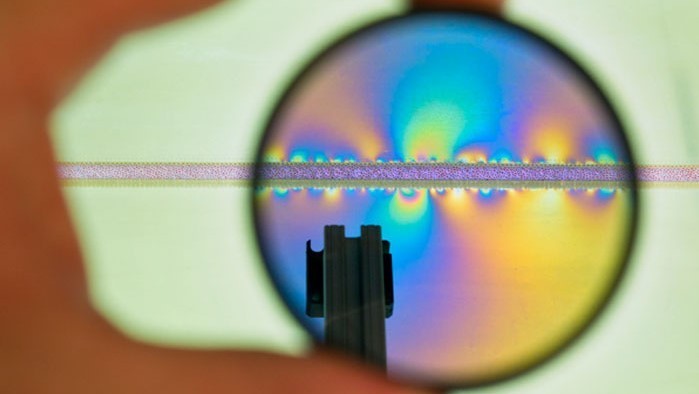This week in science is a review of the most interesting scientific news of the past week.
Europe's X-ray Free Electron Laser fired up for the first time
The European X-ray Free Electron Laser (XFEL), a US$1.4-billion (€1.2-billion) project built near Hamburg, Germany, was fired up for the first time this week. Powerful X-ray generators, such as the European XFEL, are used by scientists to capture snapshots and videos of molecules at atomic resolution.
Even though three other powerful X-rays generators are currently operational around the world, with another one expected next year, the European XFEL excels due to its firing rate: 27,000 pulses every second. This firing rate amounts to more than 200 times that of the second-ranked tLinac Coherent Light Source (LCLS), at the SLAC National Accelerator Laboratory in Menlo Park, California. As stated by Arwen Pearson, a biochemist at the Centre for Free-Electron Laser Science in Hamburg:
It’s such a different beast to anything else on the planet that it really feels like going into uncharted territory.
To create the X-rays at the European XFEL, electrons are accelerated down a 1.7Km tunnel and then set into a curved trajectory due to the action of magnets. It is the bending of the electrons’ trajectory that causes them to emit high-energy X-rays. Once these X-ray pulses reach the sample, they destroy it due to their high intensity, but they also scatter photons that carry the sample’s atomic structure information.
One of the first and most important milestones of the scientists responsible for the European XFEL once it starts operating this month will be to prove that such a high rate of data collection won’t impede the capture of molecular movies. That is because the remnants of a destroyed particle might still be present and interact with the next X-ray burst, which would blur the collected data.
Source: Nature
Predicting earthquakes through machine learning
Scientists from Los Alamos National Laboratory have used machine learning to predict when a fault would fail and generate an earthquake with remarkable accuracy. To train their software, they have used a simulator that models the buildup and release of stress through an artificial fault and listened to the acoustic signal emitted during a laboratory-created earthquake.
The machine learning technique could identify new signals, previously ignored as low-amplitude noise, as important forecasting information for potential earthquakes. Furthermore, it has found that the instantaneous acoustic emission signal could reliably predict an earthquake far in the future, something previously assumed to be impossible. Until now, fluctuations in the acoustic emission signal were neglected in favor of large events.
Even though all the results obtained so far are from laboratory-created earthquakes, Paul Johnson, a Los Alamos National Laboratory fellow and lead investigator of the research has affirmed that the technique can also be applied to real world scenarios:
These signals resemble Earth tremor that occurs in association with slow earthquakes on tectonic faults in the lower crust. There is reason to expect such signals from Earth faults in the seismogenic zone for slowly slipping faults.
Finally, Johnson also believes this approach could be applied to nondestructive testing of industrial materials, avalanches, and other events.
Source: Phys.org
Artificial intelligence to analyze gravitational lenses - 10 million times faster
Gravitational lenses are complex distortions in spacetime caused by concentrations of matter between a distant light source and an observer. Since Albert Einstein’s General Theory of Relativity, it is known that matter can bend spacetime and, in the case of a massive object, distort light into rings and arcs. As can be seen from the image above, the distortion is different from that created by an optical lens. That is because a gravitational lens produces a maximum deflection of light that passes closest to its center, not its borders.
Until now, artificial intelligence (AI) has been used only to determine whether an artifact is or is not a gravitational lens, with further analysis left for other methods. Such methods could take weeks to months to complete, usually requiring the input of experts and massive computations. But scientists from the Department of Energy's SLAC National Accelerator Laboratory and Stanford University have shown that AI can also be used in this analysis, doing it 10 million times faster than traditional methods. As stated by postdoctoral fellow Laurence Perreault Levasseur, a co-author of the study:
[The analysis] can be done by neural nets within a fraction of a second, in a fully automated way and, in principle, on a cell phone's computer chip.
To develop the AI, the scientists have created a neural network trained on about half a million simulated images of gravitational lenses. Once trained, the AI could analyze new lenses within seconds with such precision comparable to traditional methods. The scientists have also used real images from NASA's Hubble Space Telescope to test the neural network.
Source: Phys.org



















0 Comments - Add comment